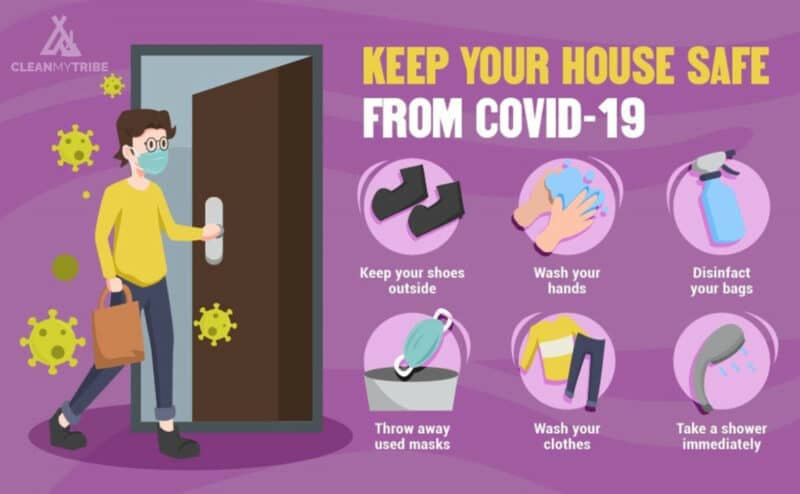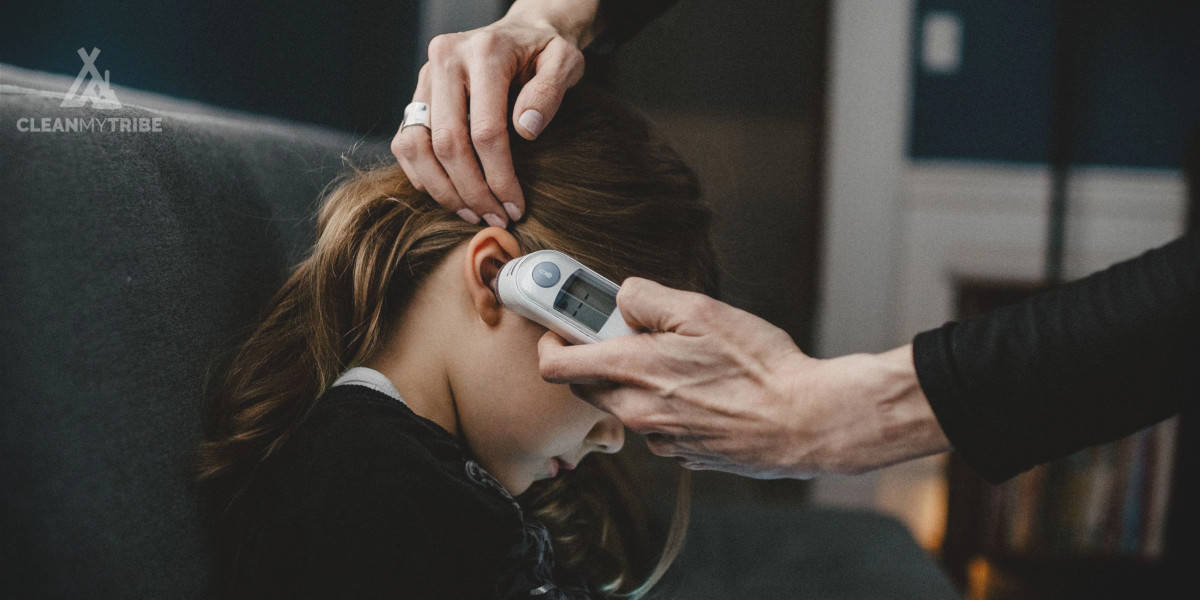If you believe that a neat and tidy home leaves no room for bacteria and viruses, well then, think again. Unlike dirt and dust, bacteria and viruses are not seen by the naked eye that is why they spread like wildfire. According to the estimate of the United States Centers for Disease Control and Prevention (CDC), there have been 39-56 million influenza cases recorded during the 2019-2020 flu outbreak.
Influenza, commonly known as the flu virus, is a contagious viral infection that attacks your respiratory system. The symptoms may resemble a worsened common cold as you may also experience body aches, fatigue, headache, fever, chills, and shortness of breath.
How is the Virus Contracted?
The flu virus can be transmitted directly and indirectly – making it highly infectious.
Direct contact transmission is when an infected person inadvertently spreads the virus by coughing or sneezing. The saliva or nasal fluids may travel as far as 6 ft. landing on the mouth or nose of a healthy person.
Indirect contact transmission is when a healthy person inadvertently touches his mouth, nose, or eyes after touching a fomite, a porous or nonporous surface or object that has been contaminated with mucous droplets.
According to experts, influenza isn’t like other viruses that have a long lifespan and are heat and bleach resistant. Although the influenza virus tends to live longer on hard surfaces than on soft ones, they can be easily killed by bleach and hydrogen peroxide.
Is Cleaning Enough?
Cleaning your home alone does not guarantee the eradication of bacteria and viruses but disinfection does.
But aren’t they the same?
I hate to break it to you but, no, they aren’t.
Cleaning is the physical removal of dirt and germs by using soap while disinfection is the process of using stronger chemicals like bleach to kill certain types of microbial species on surfaces and objects.
Five Easy Ways to Flu-proof Your Home
1. Disinfect Frequently Touched Surfaces
Disinfection of surfaces and household objects that people commonly touch is very important. A flu virus can survive on hard surfaces for up to three days and two on stainless steels and plastics.
These frequently touched surfaces and objects include:
- Light switch
- Doorknobs
- Faucet handles
- Remote control
- Keyboards
- Mobile phones
- Toys
- Tabletops
- Chair backs
Disinfect Household Surfaces:
- Use disinfectant wipes; or
- Wipe down with a damp cloth containing solution of 1/3 cup of household bleach per gallon of water.
After wiping, do not dry with a clean cloth. Allow the object to be in contact with the chemical for at least five minutes. Rinse and let it dry on its own.
Do not forget to disinfect the sponge or cloth that you used as this can be another cause of contamination. Soak it for 15-20 minutes in same diluted bleach solution.
Some precautionary measures: Wear gloves and work in a well-ventilated area when you are working with bleach as it contains chemicals that can irritate the skin and mucous membranes. Do not mix bleach with ammonia or any other cleaner.
2. Frequent handwashing
Hand washing, especially before eating, after using the bathroom, and after going outside, is just as important as house cleaning. To eliminate germs and viruses, wash your hands thoroughly for at least 20 seconds. If soap and water are not available, ethyl alcohol can be used instead.
As much as possible, avoid touching your face to reduce the chance of transmission. Take a shower immediately after going outside and change into fresh clean clothes to keep your house safe from germs.
3. Toss your trash every day
Throw away any used masks and gloves you’ve worn outside. Proper garbage disposal should be observed at all times. Avoid touching the trash can with bare hands and make sure to sanitize properly after disposing your trash bags.
4. Launder your linens
It is important to wash and clean your linens as frequently as possible. The flu virus can linger for 8-12 hours on porous surfaces like fabric, experts say. While washing machines are not designed for disinfection, running a bleach cycle can get rid of the lingering germs and viruses in the clothes. It is also recommended to use hot water when laundering beddings and towels since the flu virus cannot survive in heat above 75° C.
5. Use a paper towel
During the flu season, it would be best to use disposable items like paper towels instead of cloth towels to dry your hands off. Multi-purpose towels can harbor germs and bacteria, thus increasing the chance of transmission when used by everyone in the household.
How to Lower Your Odds of Getting the Flu?
Creating a flu-proof home would be meaningless if you are not taking care of yourself. Here are some ways to make yourself less vulnerable to influenza:
1. Get a Flu Vaccine
In the United States, flu season occurs in the fall and winter, from October through May. Medical experts strongly advise everyone 6 months and older to get an annual influenza vaccination. Since it takes two weeks for antibodies to develop in the body, it is recommended to have yourself vaccinated by the end of October before the virus begins spreading. Although it’s still possible to get infected after, vaccination reduces the severity thus, lowers the risk of hospitalization and death caused by the flu.
2. Practice Good Hygiene
We can’t stress enough how crucial regular and proper handwashing is, especially when a virus is lingering around. Proper handwashing takes at least 20 seconds or about as long as singing a Happy Birthday song twice. Also, avoid touching your face, especially the eyes, nose, and mouth.
3. Boost Your Immune System
Boosting your immune system requires a healthy diet, exercise, adequate sleep, and maintaining a moderate body mass index.
- Healthy Diet: Eating fruits, vegetables, and foods rich in vitamins C, D, and zinc will help your immune system fight infection. Although these vitamins do not prevent you from getting sick, they reduce the severity and shorten the duration of the flu symptoms.
- Vitamin C (cantaloupe, orange, strawberry, pineapple, broccoli, bell pepper)
- Vitamin D (mackerel, salmon, tuna, mushroom, egg yolk)
- Zinc (yogurt, dairy, whole grains, red meat, seafood, legumes)
- Exercise: Regular moderate exercise helps your immune system to function at a high level. Allot at least 30 minutes every day to burn your calories
- Adequate Sleep: Sleep strengthens the immune system and helps your body recover better while fighting the flu.
Now, if someone at home is infected, isolate them immediately, and limit contact as much as possible. Place them in a separate room with proper ventilation and assign a caregiver who will attend to their needs. Avoid sharing items and keep their eating utensils, drinking glass, toothbrush, towel, and blanket separate. Remind them to wear a face mask and cover their mouth and nose when coughing or sneezing.
Best Practices For Winter
Winter is when we spend the most time indoors. In addition to the precautionary measures mentioned above, here are some best practices to keep yourself safer in winter.
Our upper respiratory system contains mucus that traps dirt, dust and viruses before they reach the lungs. These soft membranes become dry and irritated due to the low humidity during winter – often causing a dry throat, itching or nose bleeds. Our risk of contracting upper respiratory tract infections and viral illnesses increases exponentially without the protection of the mucus layer. Hence humidification of your living spaces is important.
We recommend installing at least one humidifier in the bedroom to feel better while you sleep. In the day, try to stay hydrated as much as you can. If you have to go outdoors, wearing a mask as it helps to keep the warmth and moisture in, while reducing our exposure to external infections (important!).
If you happen to be ill, you can protect your friends and family by:
- Covering your mouth and nose with the anterior portion of the elbow when coughing or sneezing
- Wearing a mask and/or face shield when going outside. Maintain social distancing.
- Washing your hands thoroughly.
- Avoid sharing food.
- Ideally, you shouldn’t be visiting during this time. If inevitable, clean your hands with a hand sanitizer before touching anything at all.
Feel free to share our handy infographic for best practices during the cold season. 
Be safe! Be responsible! Protect yourself to protect others too.

